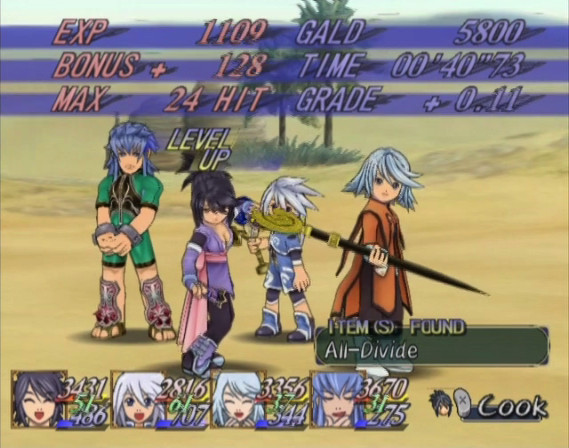

But they added a whole series of new layers with monster capturing and elemental synching in A New Dawn, so it balances out. I did have an issue with the way they simply handed you a simplified version of ToS’s “nuclear” option in combat, the unison attack, in ToS: A New Dawn. What I will say is that if you’ve played Ni No Kuni: Wrath of the White Witch, you’ll definitely have a leg up as it combines and simplifies the combat in Tales of Symphonia and its sequel ToS: A New Dawn. I couldn’t properly describe them in 10,000 words. If you like long RPGs with battle systems an immortal god probably wouldn’t live long enough to master then make a b-line for the nearest retail outlet.

In fact, everyone who plays them should immediately set the language to Japanese with subtitles to cover up the fairly hideous English voice acting. To westerners, they may be even better with the inclusion of the original Japanese voice tracks. The two games contained within are semi-old school gaming heaven. If I had to guess, I’d say it’s at least 2:1 “looking to re-live positive memories of a more innocent time.” For those people, I’ll just say that Tales of Symphonia Chronicles will give you what you’re looking for. In other words: how many people looking to play Tales of Symphonia Chronicles are looking for a fresh experience, looking to re-live positive memories of a more innocent time in gaming, or are simply looking to experience a classic they missed the first time around? Whatever the answer is, I doubt it’s an even distribution. This is the point in a review of an HD remake of an older game that I begin to question the number of people who will read it having no knowledge of the game or games in question in their original states. In that 2008 title, you can even see – if you look closely enough – that the Great Streamlining had just began to take hold. Tales of Symphonia Chronicles is an HD respray of the original Tales of Symphonia, released for GameCube in 2003, then a year later for PS2, and Tales of Symphonia: A New Dawn which came out on Wii in 2008. Even a simple game from before the Great Streamlining was obtuse, esoteric, and intimidating. These are games born before the Great Streamlining that strives to destroy my most favorite of game genres. Into this messy philosophy comes a pair of older Japanese RPGs – one from the last generation, and another from two or two-and-a-half generations ago. When it comes to games I’ve reviewed, I often wish I could go back in time and at least partially rewrite those reviews to reflect what I’m now convinced is the “truth.” It’s complicated. We get two arms and two legs, a sensory suite, and a basic intelligence to drive it then over the years they evolve based on how we use them and what they mean to us.įor me, this evolution often changes how I feel about games as I continue to play them. We are born with a set of mechanics imparted to us to use in their most basic functions and form. In that moment, it changes fundamentally. And as the player changes, so too can the mechanic, how it’s used, and how the player feels about it.

Gameplay mechanics develop organically over time and what was once taught to the player by one or two text boxes or lines of dialogue becomes a complex system unto itself when it’s combined with the player’s input and experience. They are long and complex like a life form. Reviewing role-playing games becomes problematic in that context because they are generally much longer and much more complex than other game genres, and if a particular RPG isn’t, then it’s not worth playing. You see, I am the game, the game is the review, and the review is me. To me, none of those things are separate in the sense that one can exist without the other two. That’s not to say that my reviews are fiction, it just means that I seek the magical thread that binds me to the game and the review. When I sit down to write a review, I try to find the narrative.


 0 kommentar(er)
0 kommentar(er)
